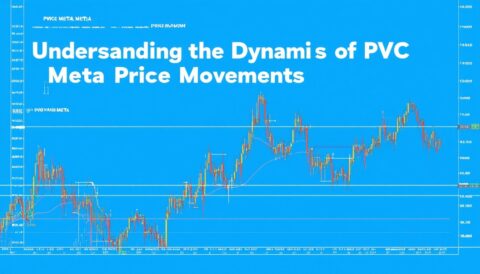Ripple’s XRP remains a prominent cryptocurrency, especially among Indian investors seeking fast, cross-border payment solutions. Amid a constantly evolving digital asset landscape, monitoring the “XRP price in INR” has become increasingly important for traders, technologists, and anyone interested in crypto markets. This article explores how XRP’s value is determined, factors impacting its price in Indian Rupees, and the strategic role it plays in the broader cryptocurrency ecosystem.

What Determines the XRP Price in INR?
The price of XRP in Indian Rupees (INR) is not simply a matter of global exchange rates. Instead, it’s the outcome of a complex interplay among international market sentiment, regulation, liquidity, and local demand on Indian exchanges such as WazirX, CoinDCX, and ZebPay.
Exchange Rates and Market Arbitrage
Globally, XRP is priced primarily against major currencies like the US Dollar (USD) or Bitcoin (BTC). As a result, XRP/INR rates are initially derived from the global XRP/USD rate, converted to INR using prevailing forex rates. However, differences in liquidity, fees, and demand can lead to a “premium” or “discount” on Indian exchanges versus international prices.
Demand-Supply Dynamics in India
India’s growing crypto user base has consistently contributed to significant trading volumes. According to local exchange data, XRP often ranks among the top five traded tokens by volume, reflecting robust demand. Price spikes in INR frequently coincide with broader crypto market rallies and local shifts, such as government policy updates or major announcements from Ripple Labs.
Regulatory Uncertainties
Regulatory developments in India – including taxation, RBI advisories, or legal clarifications – can drive short-term volatility. For instance, announcements about crypto taxation or banking restrictions often translate to sudden surges or drops in INR pricing for all leading cryptos, including XRP.
“When Indian policymakers issue statements on cryptocurrency regulation, we usually see immediate and pronounced fluctuations in both price and volume on local exchanges,” explains Sandeep Saxena, a Mumbai-based digital assets analyst.
Live XRP Price Chart: Tools And Indicators
Tracking the real-time price of XRP in INR is essential for investors and traders. Most Indian crypto platforms offer live candlestick charts, historical trends, and real-time order books to aid market analysis.
Technical Analysis Tools
Leading exchanges and apps provide several analysis frameworks, such as:
–Moving Averages (MA): Smooth out price trends over set periods, detecting support and resistance.
–Relative Strength Index (RSI): Measures momentum to determine if XRP is overbought or oversold.
–Volume Indicators: Showcase the weight behind price movements, highlighting strong buying or selling activity.
–Bollinger Bands: Offer insights into volatility and potential reversal points.
These technical indicators, while rooted in historical performance, remain integral to both day traders and long-term holders for signaling market entry or exit points.
Interpreting Indian Exchange Volumes
Unlike some global markets where XRP is paired directly with USD or EUR, Indian exchanges typically offer direct INR pairs. Price gaps, larger spreads, and sharp intraday swings are sometimes observed, especially during global news events or periods of high volatility.
Factors Influencing XRP Price Trends in India
Several external and internal factors continue to impact XRP’s value in INR beyond standard market mechanics.
Ripple’s Legal Journey and Ecosystem Growth
Ripple’s ongoing legal battle with the U.S. Securities and Exchange Commission (SEC) has had a significant impact on XRP’s global standing. Periods of legal uncertainty have often aligned with price corrections. However, favorable judgments or positive developments for Ripple Labs tend to bolster investor confidence, including in the Indian market.
Indian Regulatory Landscape
Since 2017, India’s stance on cryptocurrencies has shifted frequently, causing cycles of enthusiasm and uncertainty. While a complete ban has been avoided so far, taxation on crypto profits and lack of formal recognition continue to influence speculative behavior. Despite these uncertainties, a strong appetite persists among Indian crypto enthusiasts.
Macro-Economic Factors
Global inflation trends, interest rate changes, and INR/USD fluctuations also indirectly shape XRP’s local price trajectory. Political events, such as central bank policy changes or trade negotiations, further influence investor sentiment.
Strategic Role of XRP in Indian Crypto Portfolios
For many Indian investors, XRP presents an appealing combination of affordability and utility.
Cross-Border Remittance Use Case
XRP’s mission to provide a fast, cost-effective means for cross-border payments aligns closely with India’s massive remittance landscape. Millions rely on international money transfers, and solutions promising sub-second settlements with minimal fees, like RippleNet and XRP, are especially attractive.
Portfolio Diversification
Beyond its remittance capabilities, XRP holds a unique spot in portfolio strategy. Neither as volatile as some meme coins nor as established as Bitcoin, it’s often seen as a mid-risk, mid-reward digital asset. Sophisticated investors may use XRP to hedge exposure or capitalize on sector-wide news swings.
Key Real-World Example: XRP Price Impact After Regulatory News
A notable instance occurred in early 2022 after the Indian government announced plans for a formal digital currency framework alongside crypto taxation rules. While the broader market experienced a sharp sell-off, XRP’s price in INR dropped momentarily before rebounding as investors interpreted the regulations as a step toward legitimization rather than outright ban.
Such events illustrate how quickly the XRP/INR rate can react to domestic news, independent of global XRP trends.
Comparing XRP with Other Major Cryptocurrencies in India
While Bitcoin and Ethereum dominate headlines, XRP remains among the top-traded assets on Indian crypto exchanges. What sets it apart?
- Transaction Speed: Whereas Bitcoin confirmations take minutes, XRP transactions often settle in seconds.
- Fee Structure: Transaction fees are generally lower for XRP compared to ETH, making it appealing for smaller transfer values.
- Regulatory Perception: Ripple’s focus on the banking sector and partnerships with global financial institutions impart a sense of credibility, even amid volatility.
Risks and Considerations for XRP Investors
No digital asset is without risk. Potential investors in India should bear in mind:
- Price Volatility: Sudden global or local events can cause significant shifts in INR rates.
- Liquidity: Some smaller Indian exchanges may have limited volume, impacting large trades.
- Regulatory Changes: Without clear legal frameworks, the tax and compliance landscape may evolve unexpectedly.
- Technology Risks: Network or custodial vulnerabilities can impact accessibility or asset safety.
Practicing proper due diligence, leveraging reliable exchanges, and diversifying holdings remain prudent approaches for navigating the Indian crypto markets.
Conclusion: Monitoring and Navigating XRP/INR Moves
Tracking the XRP price in INR involves more than glancing at live charts—it’s about understanding the blend of global benchmarks, local sentiment, and external drivers impacting every swing. As India’s regulatory approach matures and crypto adoption climbs, XRP is poised to maintain its significant presence in the evolving digital asset portfolio of Indian investors.
For those considering XRP, balancing vigilance with sound research—and keeping an eye on regulatory signals—will remain crucial in harnessing the real potential of this dynamic cryptocurrency.
FAQs
How is the XRP price in INR calculated?
XRP’s price in INR is usually derived by converting its global USD rate to Indian Rupees, factoring in local exchange liquidity and demand, leading to occasional price premiums or discounts.
Why does the XRP/INR price differ across exchanges in India?
Variations arise due to differences in trading volumes, user demand, liquidity, and sometimes exchange-specific fees or policies.
What influences sudden changes in XRP’s price in India?
Major drivers include global crypto news, local regulatory updates, forex rate shifts, and large trades or market movements on Indian exchanges.
Is it legal to buy and trade XRP in India?
Currently, there is no ban on buying or selling XRP in India, but regulations require exchanges to meet compliance and tax requirements. Investors should stay updated on any regulatory changes.
What is the main use of XRP for Indian users?
The most significant use case is facilitating fast, cost-effective cross-border payments, making XRP appealing for remittances and international transfers.
Where can I check live XRP price in INR?
Reliable Indian exchanges such as WazirX, CoinDCX, and ZebPay offer real-time XRP/INR prices, charts, and market data for investors.




